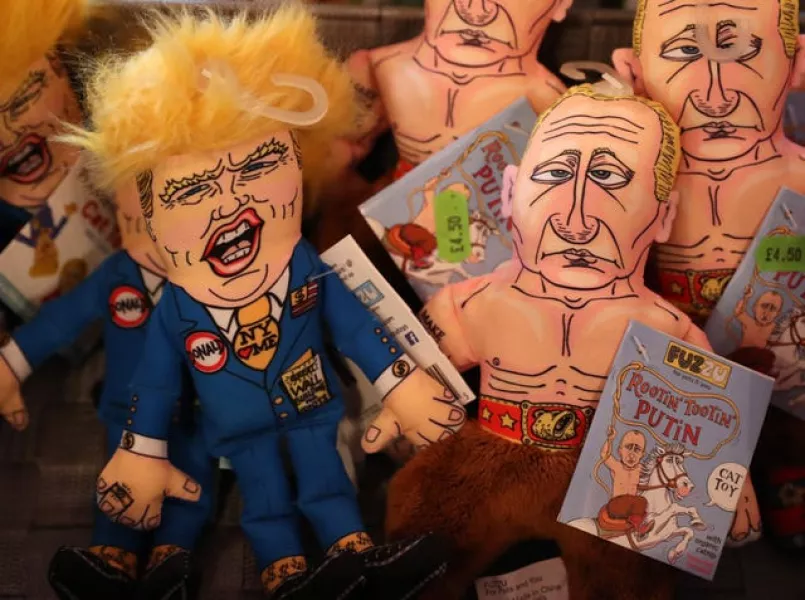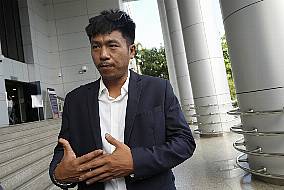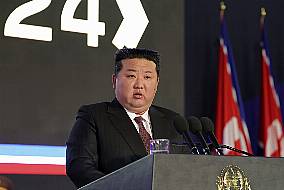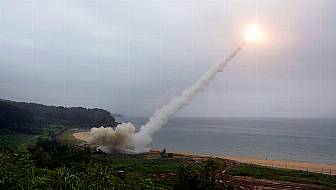US President Donald Trump has consistently pointed to tax cuts and regulatory relief as key successes of his first four years in office.
He has repeatedly pushed for the end of the health law put in place by the preceding administration led by former president Barack Obama but has yet to deliver a plan to replace it.
Mr Trump has spent most of this year defending his response to the coronavirus pandemic while fighting openly with scientists and medical experts about vaccines, treatments and more.
If he gets another four years in office, there is no indication of any big policy shift.
But here is a glimpse at how a second term of Mr Trump might look:
– Economy, taxes and debt

Mr Trump has predicted that the US economy will rebound in late 2020 and take off like a “rocket ship” in 2021.
He promises that a coronavirus vaccine or effective therapeutics will soon be available, allowing life to get back to normal. His push for a payroll tax cut over the summer was thwarted by stiff bipartisan opposition. But winning a second term – and a mandate from voters – could help him resurrect the idea.
An analysis from the Committee for a Responsible Federal Budget estimates that Mr Trump’s plan would increase the debt by about 5 trillion US dollars over 10 years. That is on top of the 13 trillion dollars in deficits the country is already expected to run up during that time.
The national debt now stands at more than 20 trillion dollars.
– Coronavirus pandemic

Mr Trump insists that the country is “rounding the corner” on the pandemic and has stepped up calls on Democratic governors to lift coronavirus restrictions in their states. But Mr Trump’s sunny outlook belies the ground truth in many states – including several critical to his path to 270 Electoral College votes – that have seen a surge in the virus.
Mr Trump says he is “pretty damn certain” that vaccines and new treatments for the virus are coming in the not-so-distant future. Scientists are more cautious about the timing.
Congress passed and Mr Trump signed into law a more than 2 trillion dollar coronavirus relief package earlier this year, but the two sides have been unable to agree on an additional aid package.
– Healthcare

As a candidate for the White House, Mr Trump promised that he would “immediately” replace Mr Obama’s healthcare law with a plan of his own that would provide “insurance for everybody” with lower costs. Americans are still waiting for a plan that Mr Trump has been teasing for many months.
He may be counting on the Supreme Court, which is scheduled to hear a case challenging “Obamacare” soon after the election. The court now has a solid conservative majority with the confirmation of Amy Coney Barrett as a justice.
– Immigration

Mr Trump worked through his first term to sharply curtail both legal and illegal immigration. Expect that to continue if he wins a second term.
One of his top priorities would be to use agreements with Central American governments as models to get countries around the world to field asylum claims from people seeking refuge in the United States, a top adviser, Stephen Miller, recently told The Associated Press. He said the agreements would help stop “asylum fraud, asylum shopping and asylum abuse on a global scale”.
Mr Miller also forecast a broader offensive against so-called “sanctuary” jurisdictions that limit co-operation with federal immigration authorities, saying the administration would use its “full power, resources and authority”. He vowed more efforts towards legal immigration “based on merit”.
Mr Trump’s pledge to build a wall along the US border with Mexico was a hallmark of his first presidential campaign and four years in office. Mr Trump is expected to continue to trumpet progress after having completed nearly 400 miles of wall construction, though most of that replaced existing smaller barriers.
Mr Trump has yet to outline second-term immigration priorities in detail, though he has openly toyed with trying to repeal a constitutional right to citizenship for anyone born in the United States.
– Foreign policy and national security

The Trump administration has nudged three Arab states — Bahrain, Sudan and the United Arab Emirates — to normalise relations with Israel, and Mr Trump says more countries will follow.
Historically, Arab nations have refused to recognise Israel until the Palestinians’ goal of an independent state was realised. Mr Trump is aiming to create an alliance of countries against Iran.
The administration is still trying to reach an agreement with Russia to extend the last remaining arms control agreement between the two nations, which expires in early February.
The president has reduced to about 3,000 the number of troops in Iraq. The US plans to reduce the number of troops in Afghanistan to at least 4,500 in November, although Mr Trump wants them all withdrawn by the end of the year.
– Public health and environment
A second term for Mr Trump would begin to see a US transformed by the scores of public health and environment rollbacks in his first term, when the administration weakened protections in landmark pollution laws that had stood for half a century.
Mr Trump’s biggest environmental rollbacks include removing federal protections for millions of miles of wetlands and waterways. That means mining companies and other industries will be freer to dump waste into the fragile habitats or destroy them outright, removing buffers against storms and flooding and making it harder for cities downstream to clean public water supplies, environmental groups say.
Another major rollback means neighbourhoods nationwide will find themselves having less say about highways or other big projects tearing through their communities. Other rollbacks enacted in Mr Trump’s first term – in regulations ranging from endangered species to oil and gas and mining in federal wilderness to power plant pollution to water-thrifty dishwashers – will take effect.
On climate change, Mr Trump’s withdrawal of the United States from the Paris global climate accord would become official on November 4, the day after the presidential election. Mr Trump is still fighting California and other Western states over his plans to ease future vehicle mileage standards, undoing another legacy climate effort of the Obama administration.
A Supreme Court made more conservative by Mr Trump’s appointments will decide pending court challenges by states and environmental groups to many of the rollbacks.
The Trump administration says it wants to focus on helping minority communities that are disproportionately harmed by polluting industries in a second term. Environmental groups point to the administration’s efforts to slash funding for such programmes, and call it an empty election-year promise.
– Education

Mr Trump believes that a key to economic recovery from the virus is fully reopening schools, though most Americans are wary.
He is calling for the expansion of charter schools and school choice programmes, including a proposed tax credit for people who contribute to scholarships sending students to private schools and other education options.
Mr Trump frequently rails against what he has described as “radical left indoctrination” in schools. He is pledging to create a commission to promote “patriotic education” in schools.
– Abortion

Before becoming a presidential candidate, Mr Trump described himself as a strong abortion-rights proponent. But after coming to Washington, he pushed for overturning Roe v Wade, the Supreme Court ruling that 47 years ago established a constitutional right to abortion.
Anti-abortion groups hope the addition of Ms Barrett to the Supreme Court will provide a majority to overturn Roe. Ms Barrett has declined to characterise Roe as a “super-precedent” that must not be overturned, although she says that she sets her personal views aside when weighing cases.
Mr Trump has also barred federally funded family planning clinics from referring women for abortions. He supports the Hyde Amendment, a series of federal laws that ban the use of taxpayer money to pay for abortions except in cases of rape or incest or to save the woman’s life.
– Social security
Even before the coronavirus shutdown sent the economy on a rollercoaster ride, government experts estimated that Social Security would be unable to pay full benefits starting in 2035. The programme’s insolvency date is now likely closer than that, because layoffs have cut into Social Security tax collections from workers and employers.
Mr Trump kept his promise not to cut Social Security benefits, but this summer he sent confusing signals with a plan to temporarily suspend collection of certain taxes that fund the programme. While the White House staff said it was a limited measure that would have no lasting impact, Mr Trump kept hinting to reporters that he had much bigger tax cuts in mind. Early in the year, he told an interviewer he wanted to tackle “entitlements” or benefit programmes, in a second term.
– Guns
President Trump – you're a staunch defender of the Second Amendment, and we are proud to endorse you for a second term.
NRA's power lies in our ability to generate grassroots support, mobilize voters, and fight for our constitutional freedoms. –Wayne LaPierre - EVP, @NRA https://t.co/zpIzw0Ptz5— NRA (@NRA) July 17, 2020
Mr Trump has flirted at times with tighter gun laws. After the Parkland school shooting in Florida two years ago, Mr Trump chided Republican members of Congress for being too “scared” of the National Rifle Association to tighten gun laws.
And after back-to-back mass shootings in Ohio and Texas in 2019, he embraced calls for “strong background checks”. He backpedalled quickly in each instance.
In the campaign, the president has repeatedly promised to “defend our Second Amendment”. The NRA’s political action committee has endorsed Mr Trump.
– Veterans

Mr Trump frequently touts an expanded programme at the Department of Veterans Affairs passed by Congress in 2018 that allows veterans to choose a private physician outside of the government-run VA system and still receive taxpayer-paid medical care.
Mr Trump supports giving veterans wide access to private sector care if they are dissatisfied with VA treatment, and he has suggested he may issue additional regulations in a second term that will make it even easier.
Mr Trump has boosted telehealth services at the VA and broadly promises an improved US economy in a second term that will reduce veterans’ unemployment.
He created a federal task force last year to address veterans suicide. In October, he signed into law a bipartisan bill that creates a new three-digit 988 phone line – similar to 911 – that will be reserved for mental health emergencies. It becomes active in autumn 2021.
– Trade

Mr Trump views the signing of two major trade deals – an updated pact with Mexico and Canada and the first phase of a China agreement – as signature achievements during his first term.
The US and China signed in January, less than two months before the pandemic put an enormous strain on US-China relations. Mr Trump says the first phase would lead to China buying roughly 200 billion dollars over two years in US agricultural products, energy and other American products.
In return, the US cancelled or reduced tariffs on an array of China imports. So far, China is significantly behind in meeting its purchasing commitments, according to tracking from the Peterson Institute for International Economics.
The second phase of the deal is expected to focus on tougher issues between the countries, including Mr Trump’s wish to get China to stop subsidising its state-owned enterprises.
But for Mr Trump, who has come to frequently refer to the coronavirus as the “China virus”, it remains to be seen whether he will be able to effectively re-engage Beijing on trade. Mr Trump recently said he’s “not interested” in talking to China.







